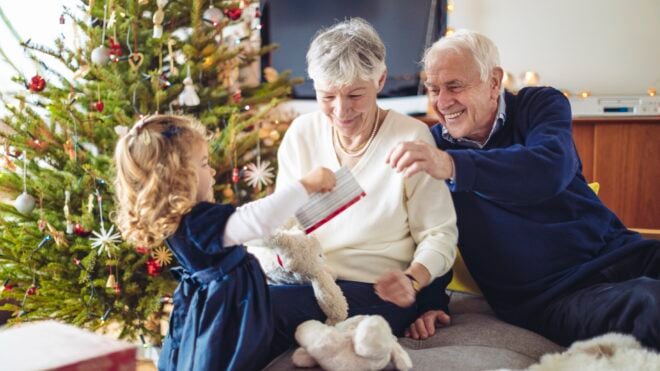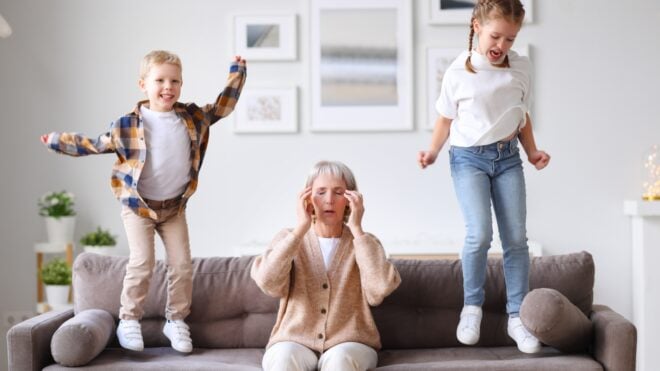Your three children have distinct personalities with definite likes and dislikes, and now they’ll be sharing a bedroom. Don’t worry; it’s not a formula for disaster. Think of the bright side — they’ll learn cooperation and flexibility, and their late-night chats and the bonds they'll form will stay with them throughout life. Talk to each child individually to discover their unique visions for the space. Your kids will be more open to the idea of sharing a room if they have a voice in its creation. Sure, there will be compromises along the way, but all three personalities will shine through in a well-designed bedroom.
Color
Color is the key to cohesiveness. “A general rule of thumb when selecting paint colors is to first select neutral base and trim colors and then choose accent colors that complement each other,” says Melissa Salamoff, president of Salamoff Design Studio in Burbank, California. If you let the children select their own accent colors, make sure you give them your preselected choices as options, so you end up with colors that harmonize. Paint the field neutral and then use accent colors on smaller areas, bedding, accessories and area rugs.
RELATED: Stylish Art Ideas for a Kid's Room
Carpet Tiles
Warm the space with an area rug. Use carpet tiles for a custom rug solution that gives children a sense of ownership, suggests Salamoff. Paint bold color stripes vertically from ceiling to floor with each child’s chosen accent color. Start the stripes on the individual accent walls and carry them through to the area rug, incorporating key colors in a unified pattern. Include your children in the process of selecting the carpet tiles. If you preselect color choices for the tiles before involving the children, it ensures the color palette will work. This area rug can act as their shared play space as well. Don’t be afraid to go bold on the stripes and the rug, adds Salamoff.
Furniture
When you select furniture pieces, stay away from fads, such as cartoon characters, since they go out of style quickly. Save trends for the accessories. Choose quality furniture that will endure. Beds with drawers built into the bottom and tall dressers are smart choices. If you paint the bed frames to match, even with different bedding, the furniture will look interconnected. Consider a long, narrow desk area — with a nook for each child — that fits along one wall and won’t take up much room.
RELATED: 10 Fun Letter Prints for Kids' Rooms
Bed Arrangement
Twin beds work well in a shared bedroom. A bunk bed is another possibility, but some children prefer more privacy. Instead of arranging the beds in the center of the room, have each child’s bed rest against a wall, so they can create their own haven. “To save on precious floor space, do not use traditional headboards. Use decals instead to fabricate a decorative headboard that is unique to each child,” recommends Salamoff. There are many sources for wall decals, so the sky can be the limit.
Personalization
Give each child a shelf for keepsakes and important items, such as trophies, that she wants to display. Individual cork boards provide a place for posting pictures and mementos. Buy matching picture frames and let each child choose photographs or artwork to put into the frames. Children like to see their names on display. Buy large, colorful letters to hang on the wall. “Have an overarching theme for the room,” suggests Salamoff. For example, a forest, city or garden is a good base theme. Let each child add whatever characters, animals or objects she wants to that landscape to complete the story.
Storage
Proper storage keeps the room looking neat and organized. “Instead of having three separate storage areas for each child’s toys, have open cubbies on one wall that children can share,” recommends Salamoff. Each child should have a unique color of tubs, so the kids know whose tubs are whose. If you don’t have room for individual dressers, purchase a tall dresser or have the closet designed to achieve maximum potential, says Salamoff. Use a color-coding technique to create an easy way for the kids to identify which clothing drawers are theirs. Use under-bed storage to hide odds and ends. An ottoman can double as a place to house games that all three children use.




